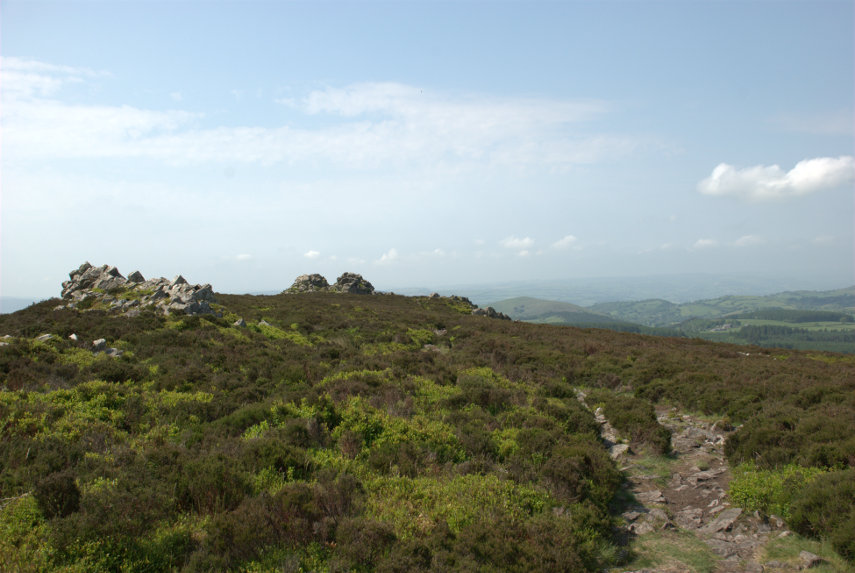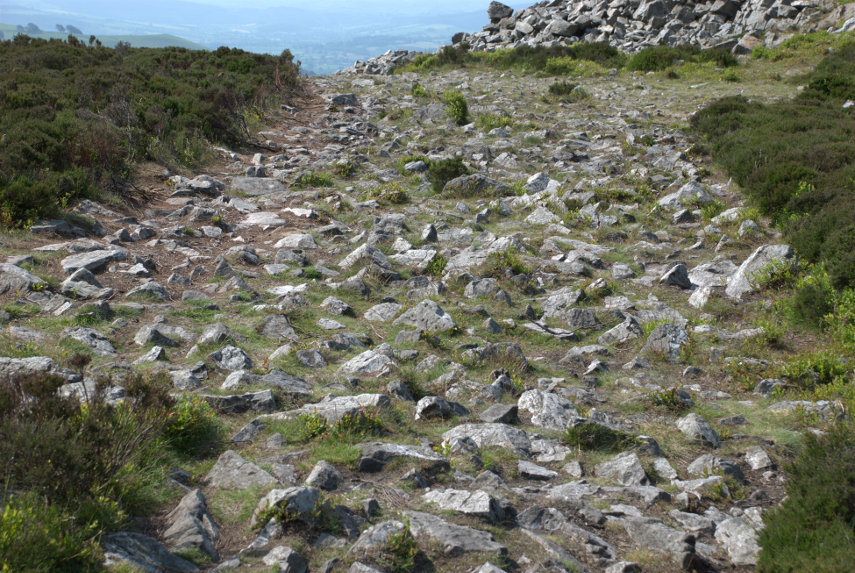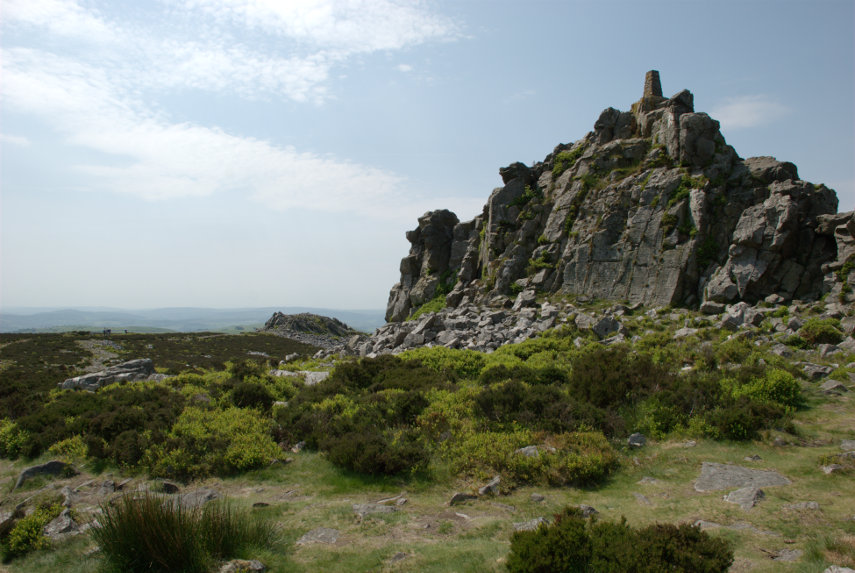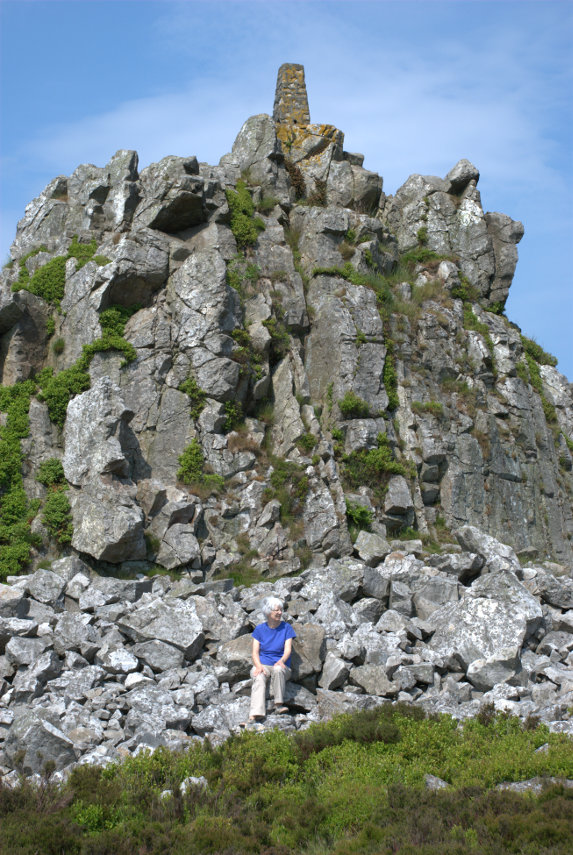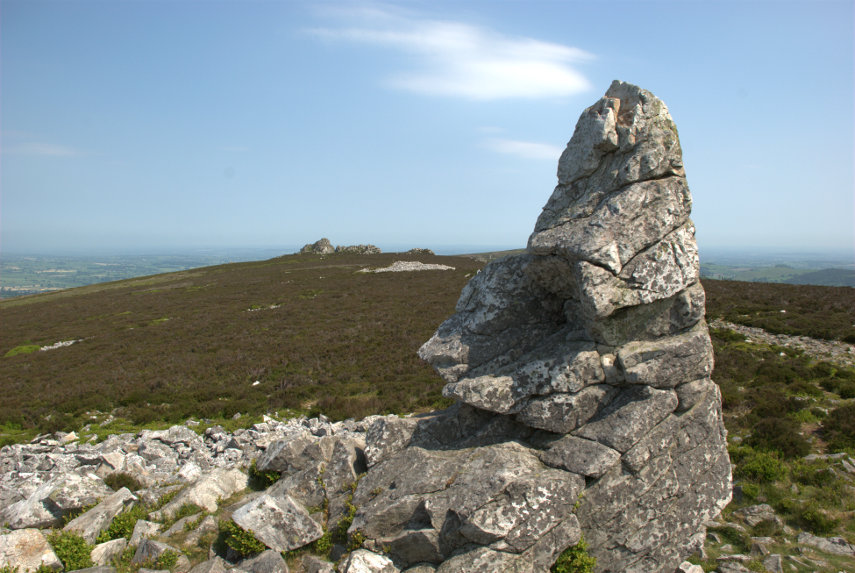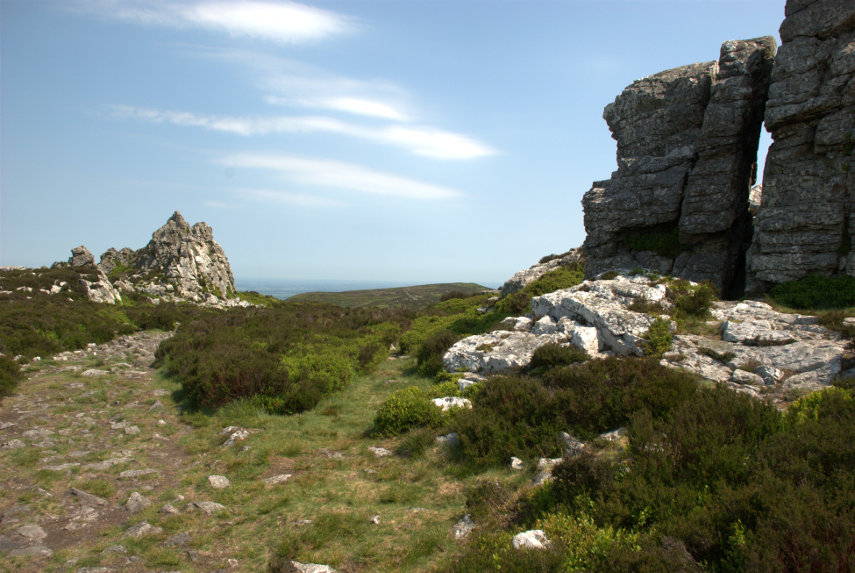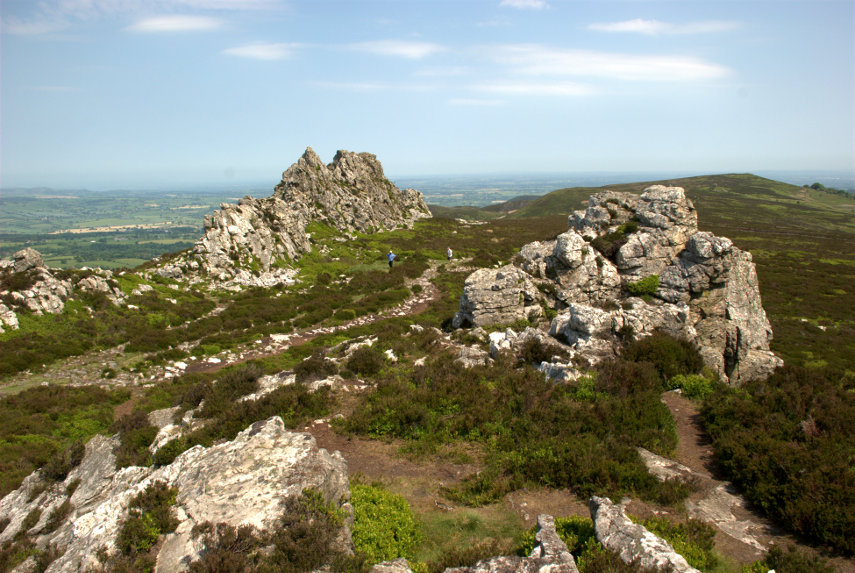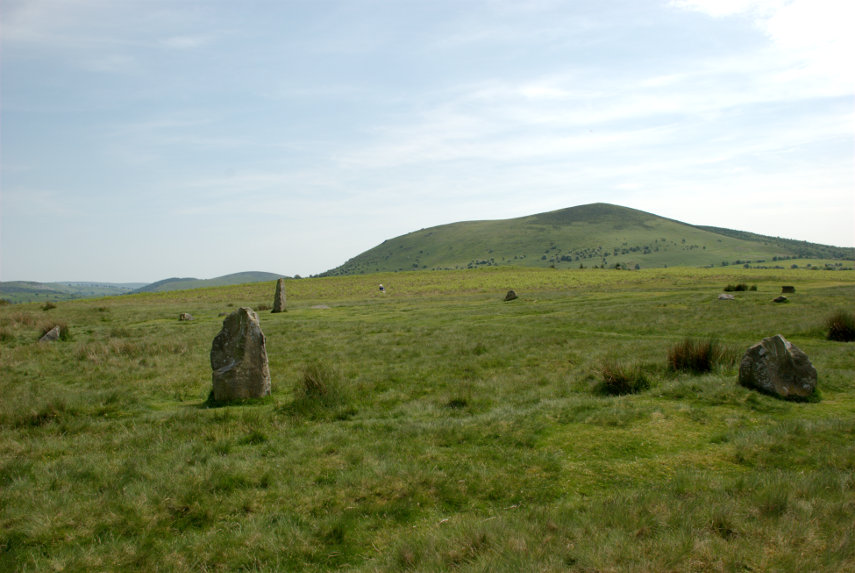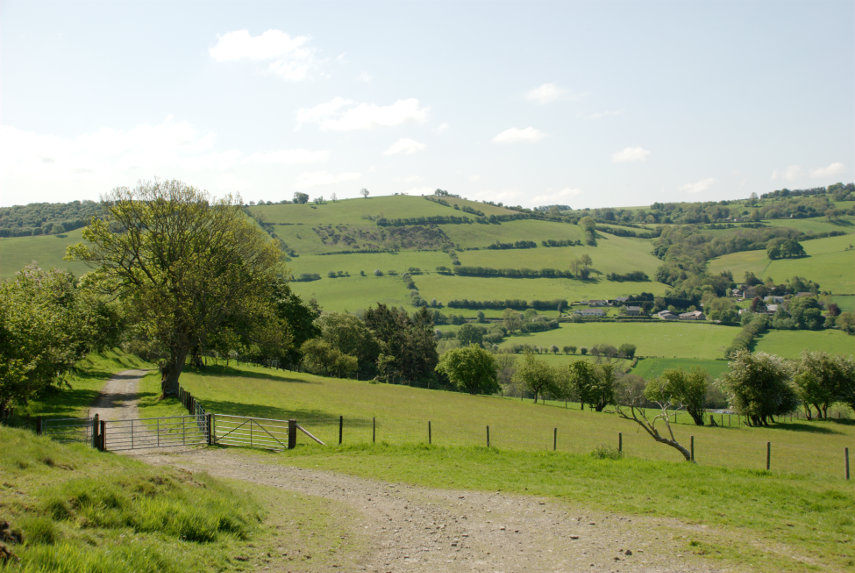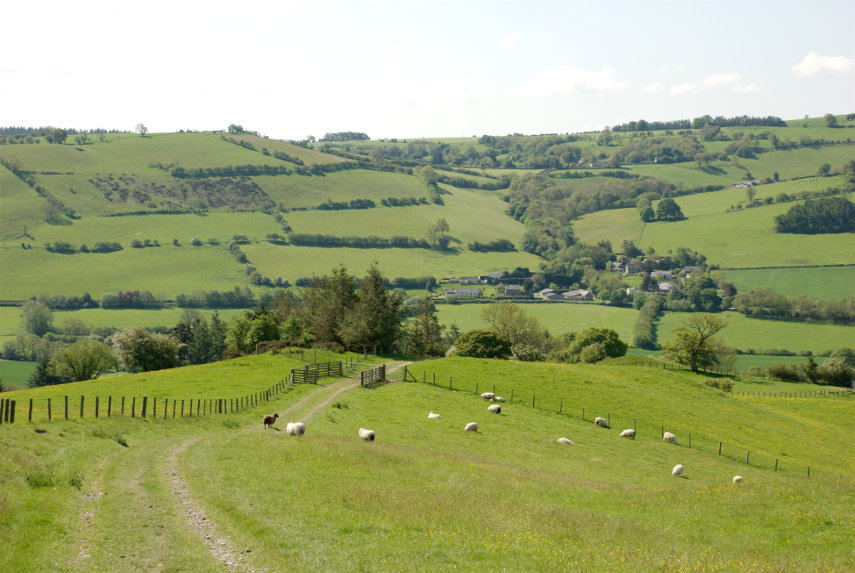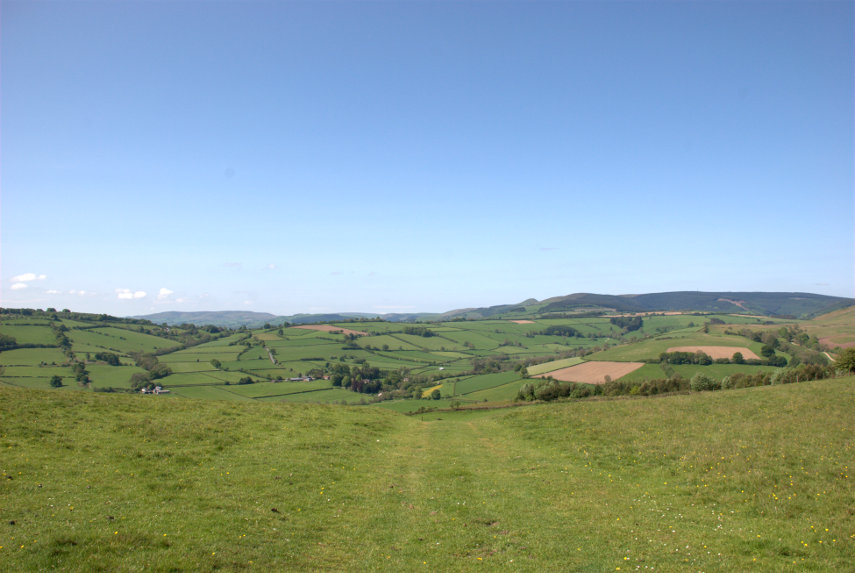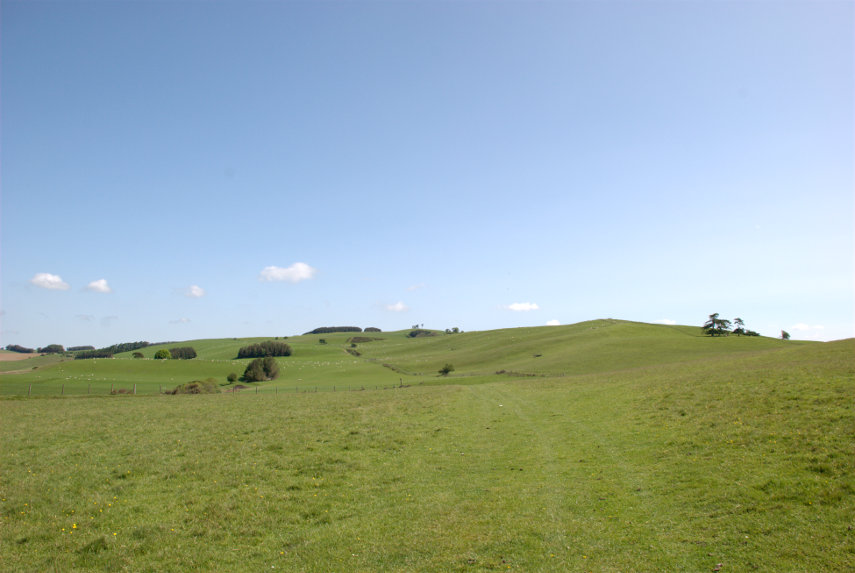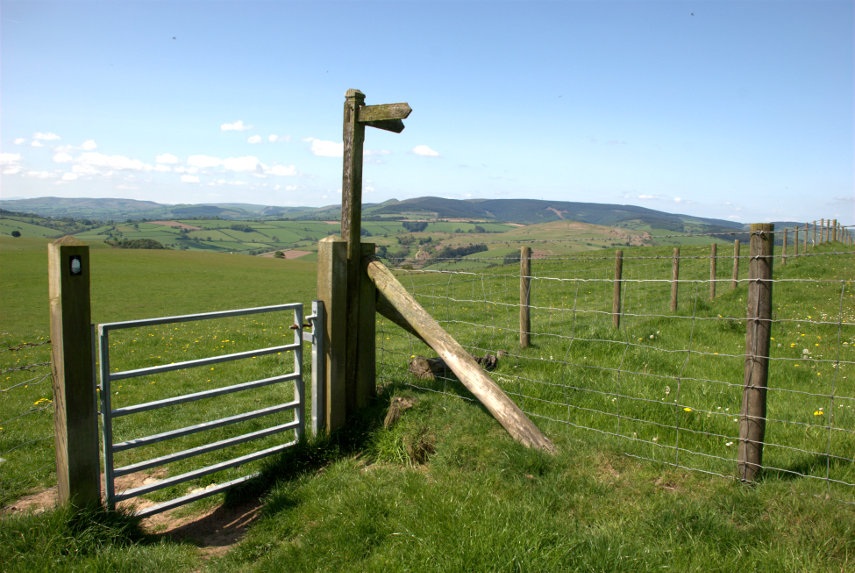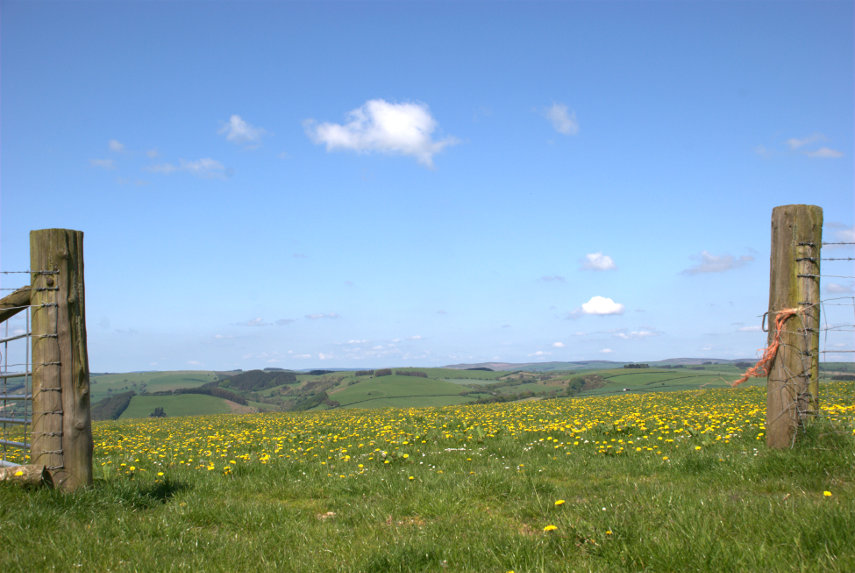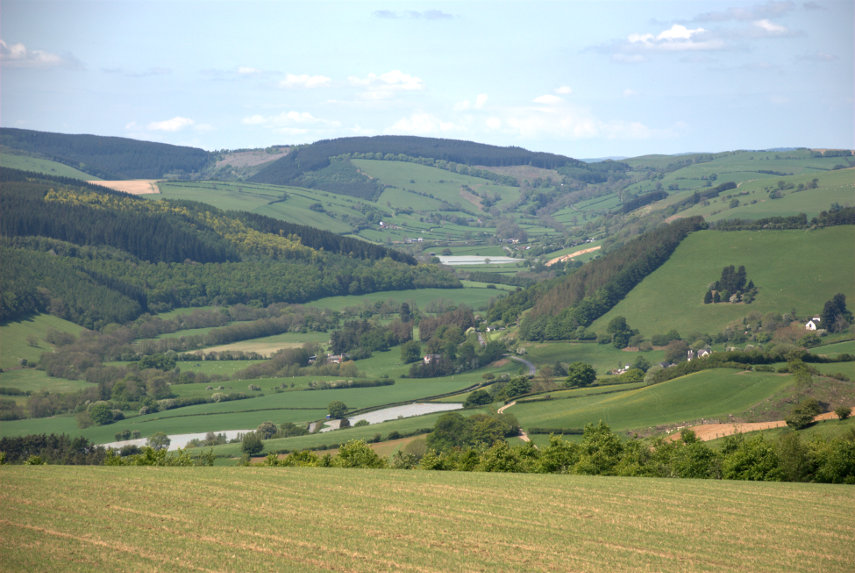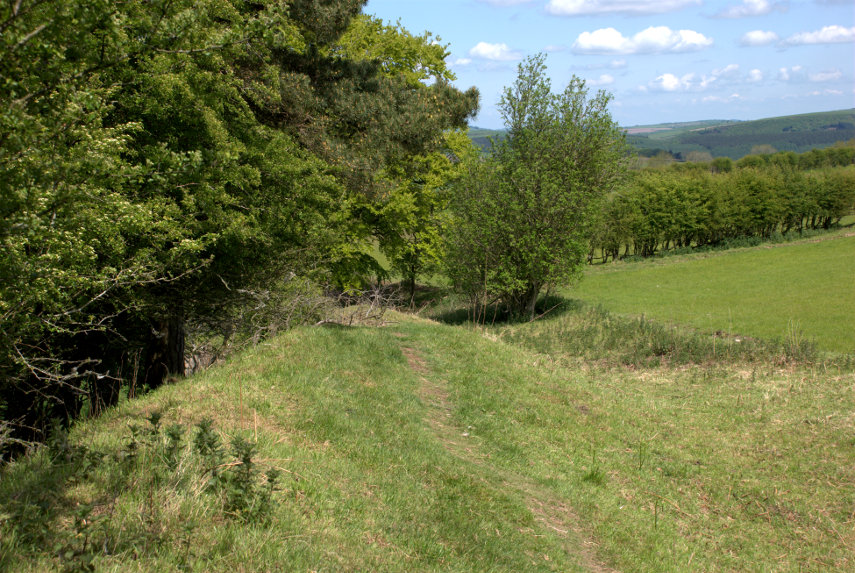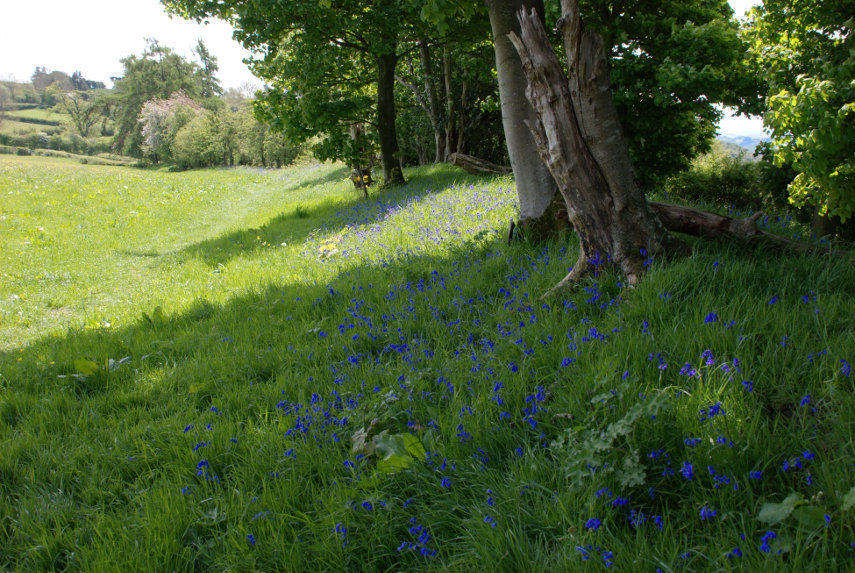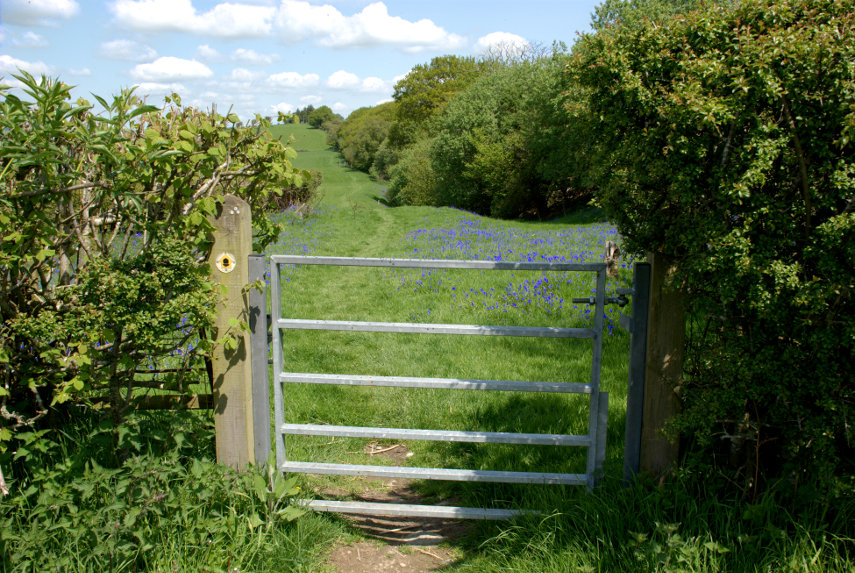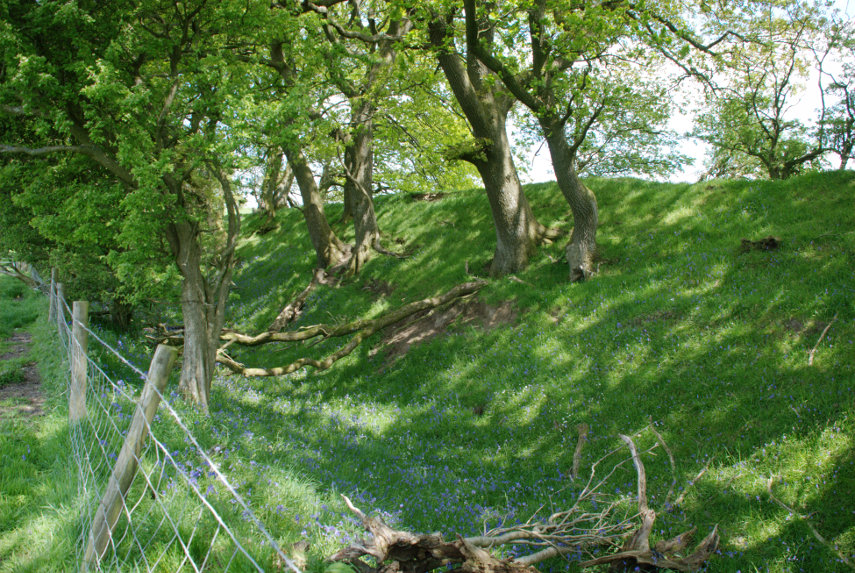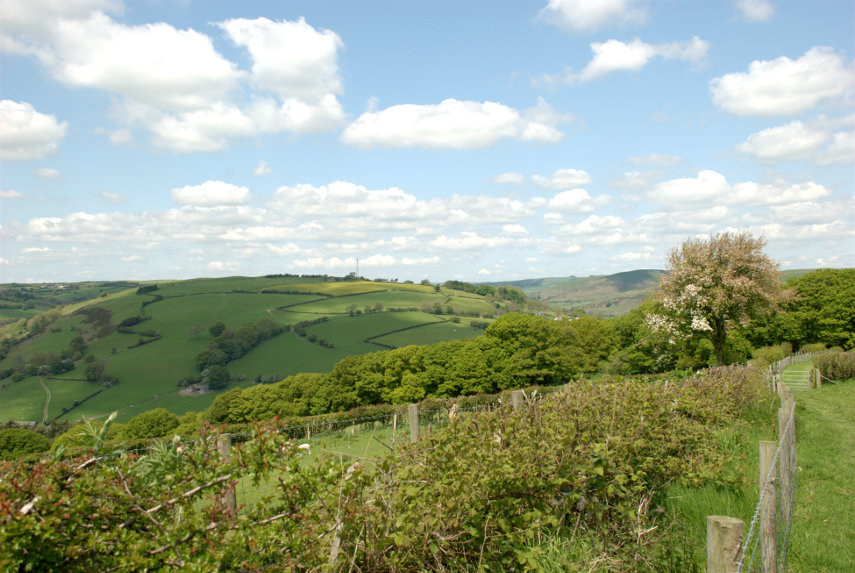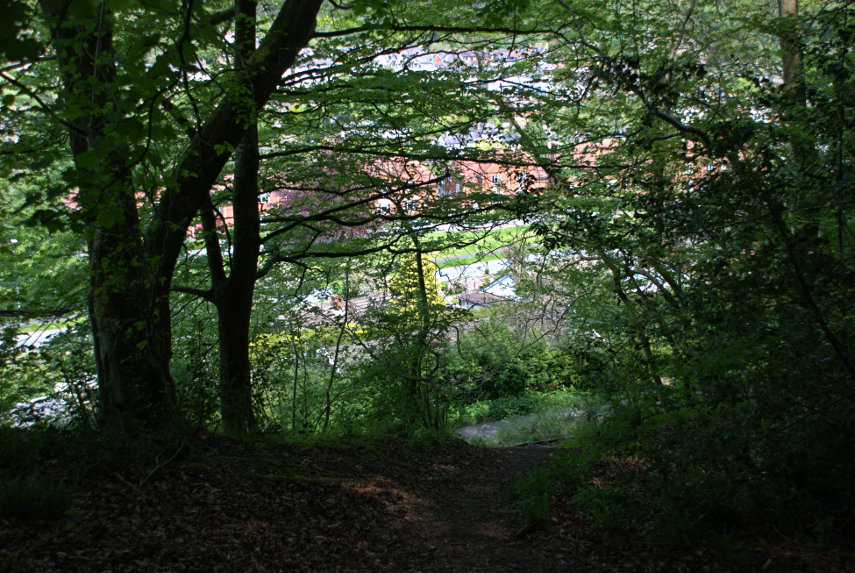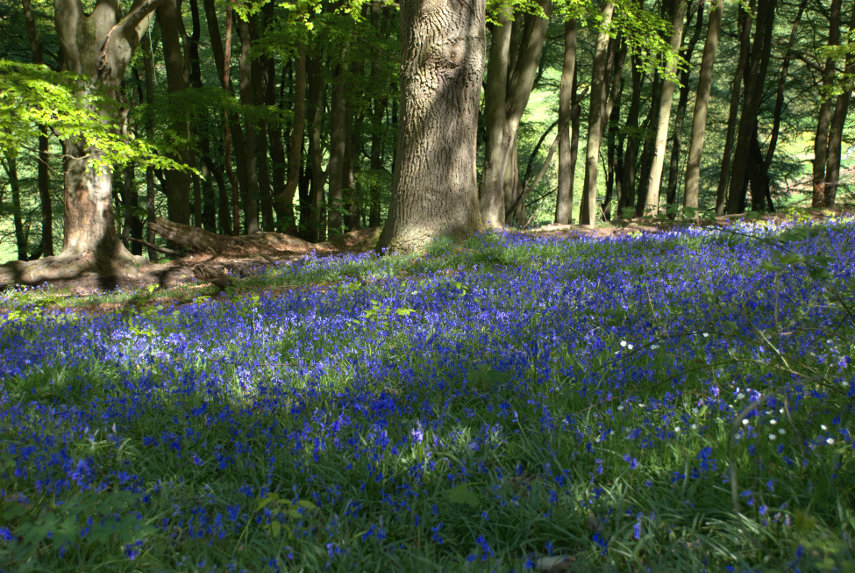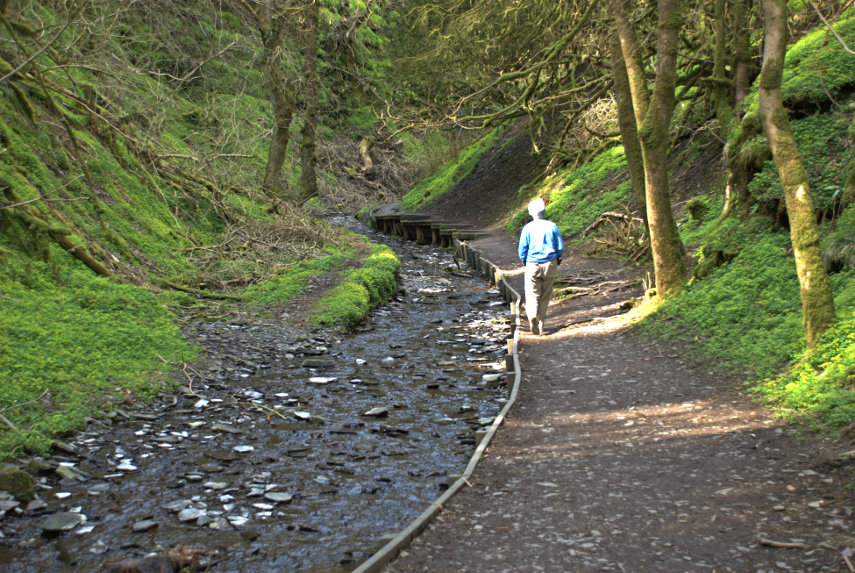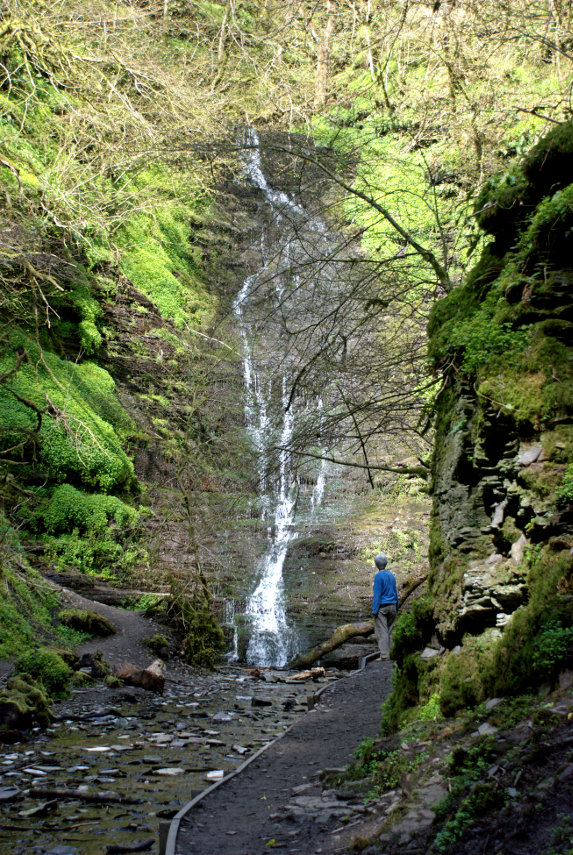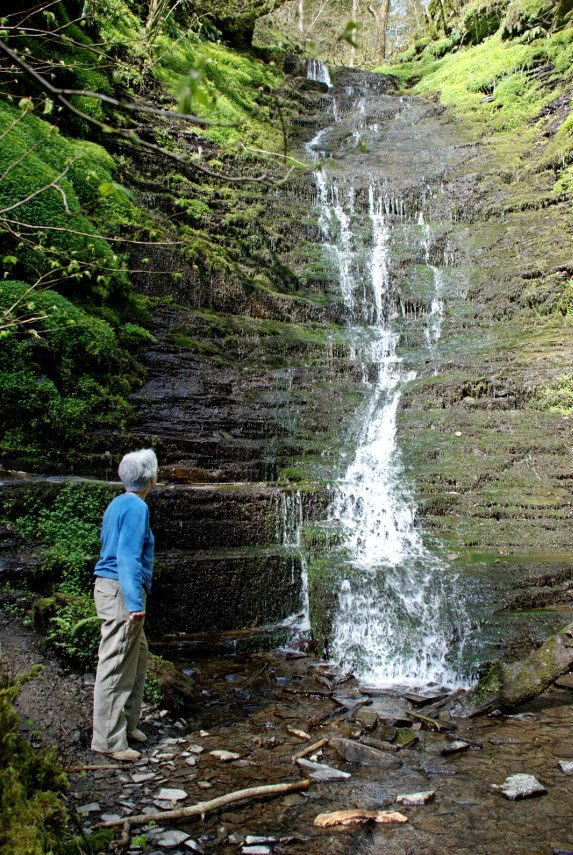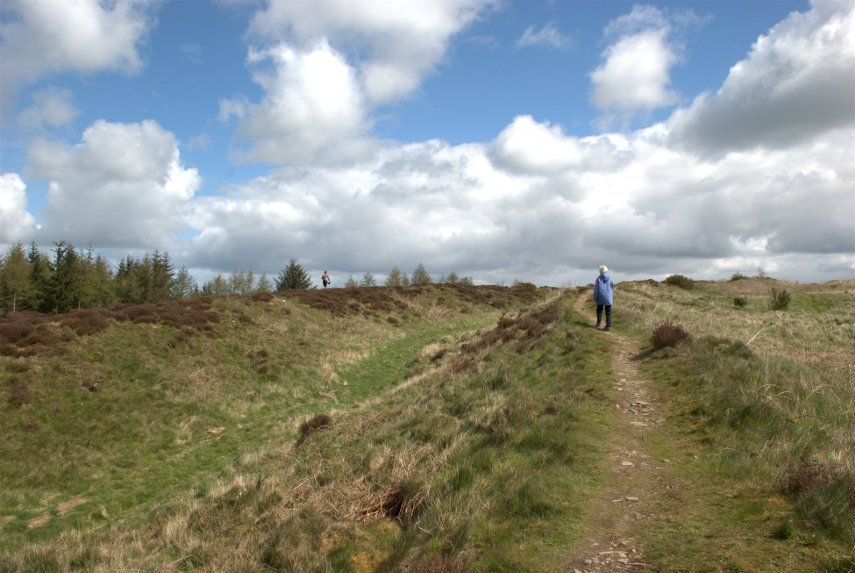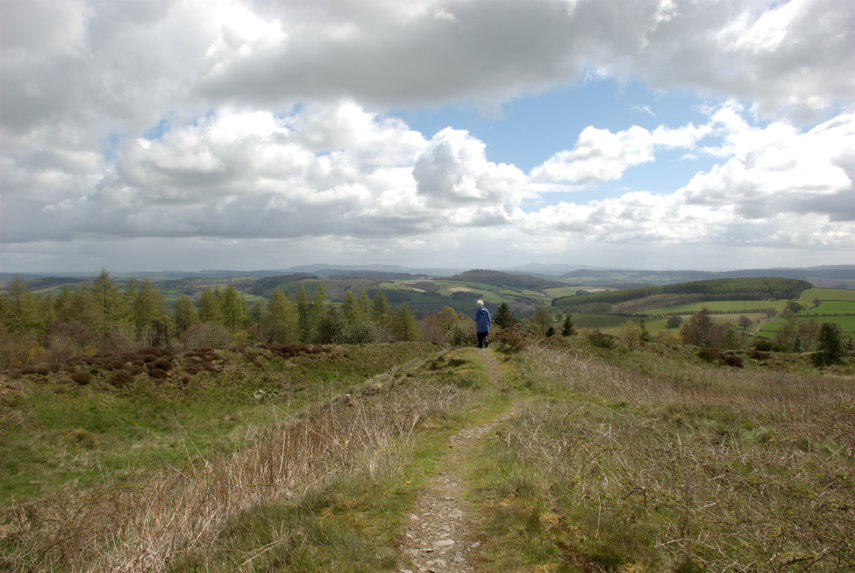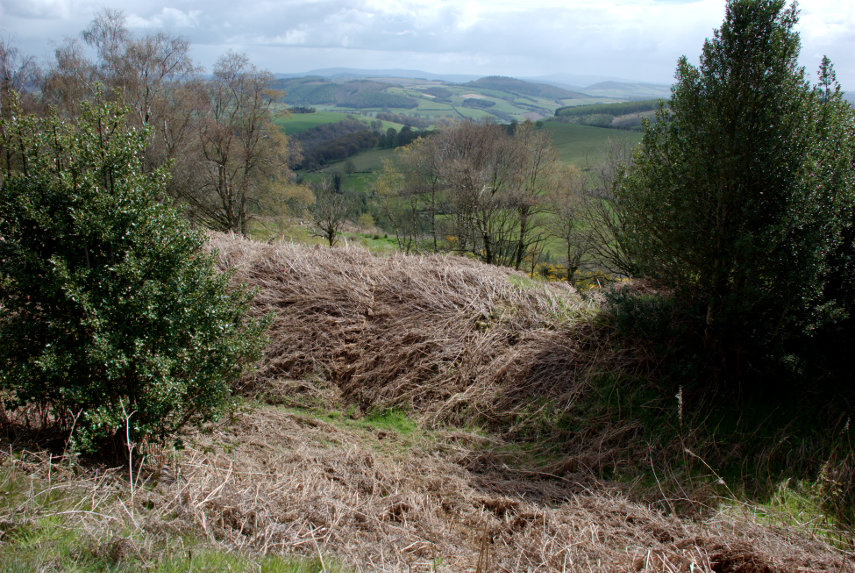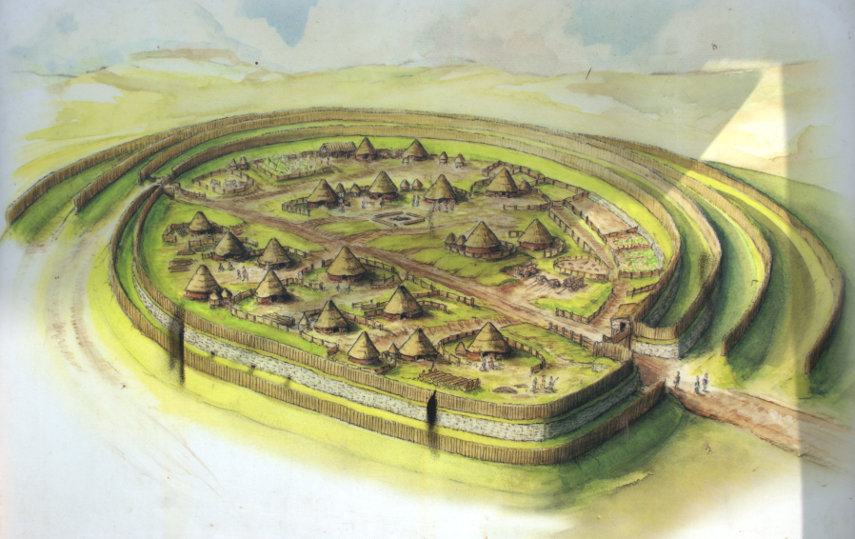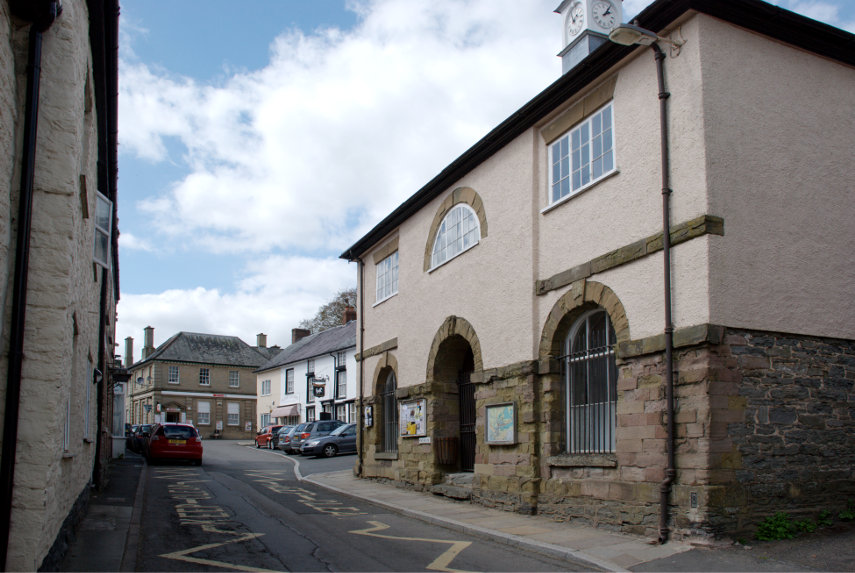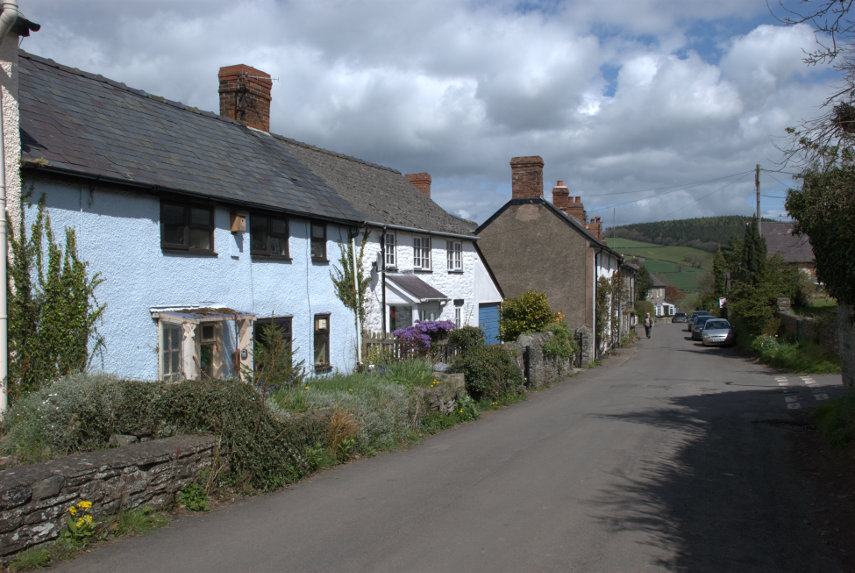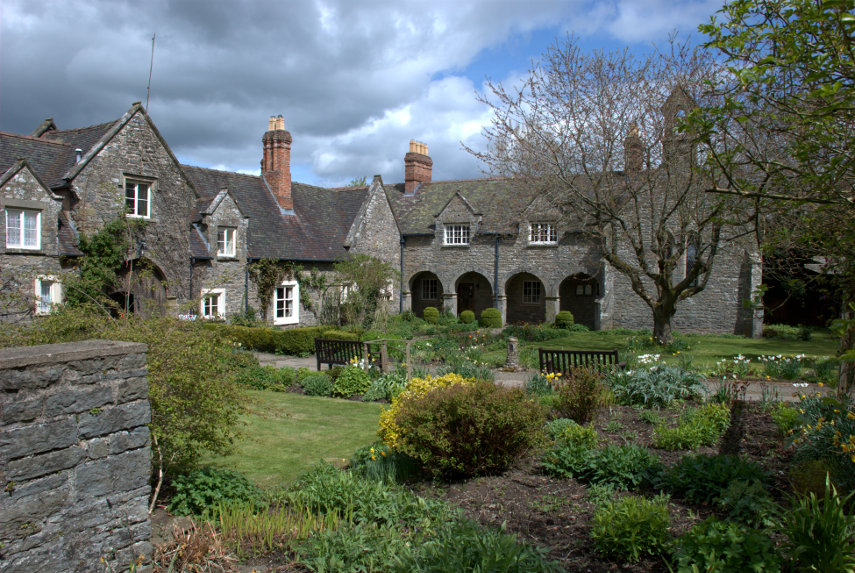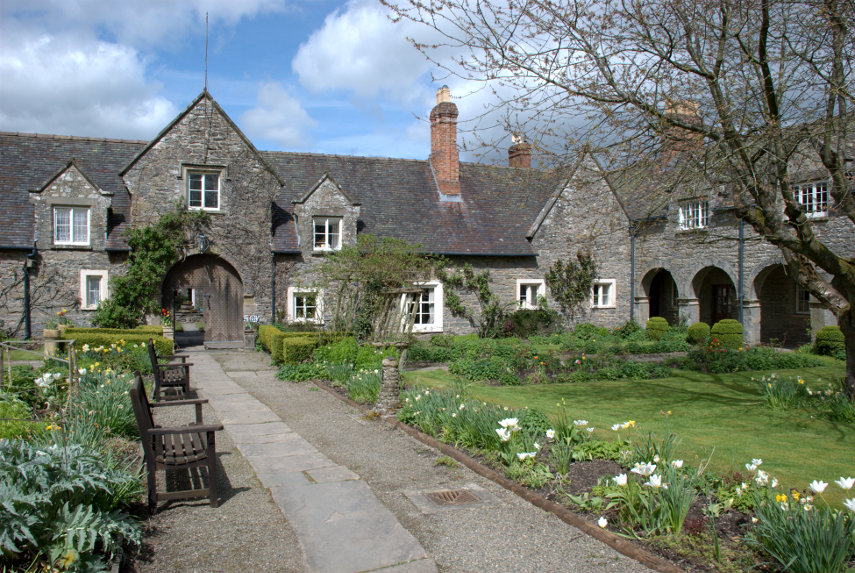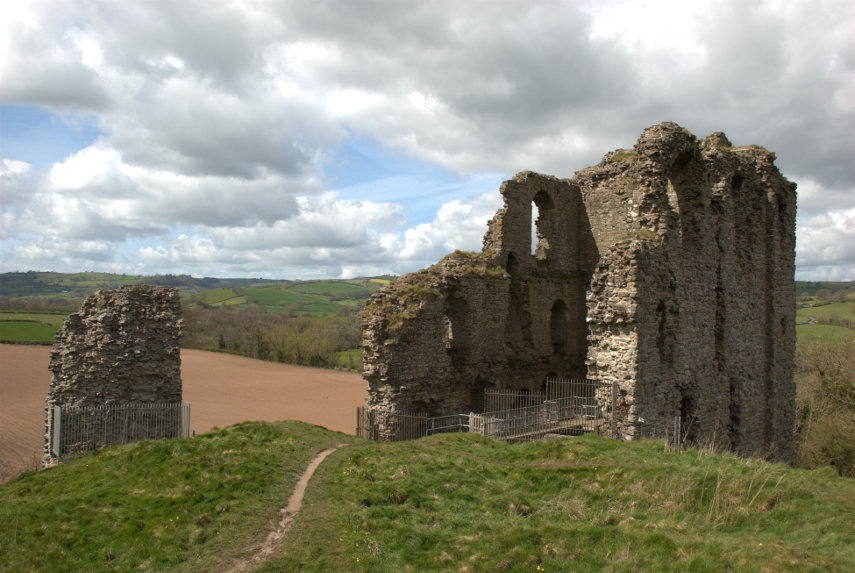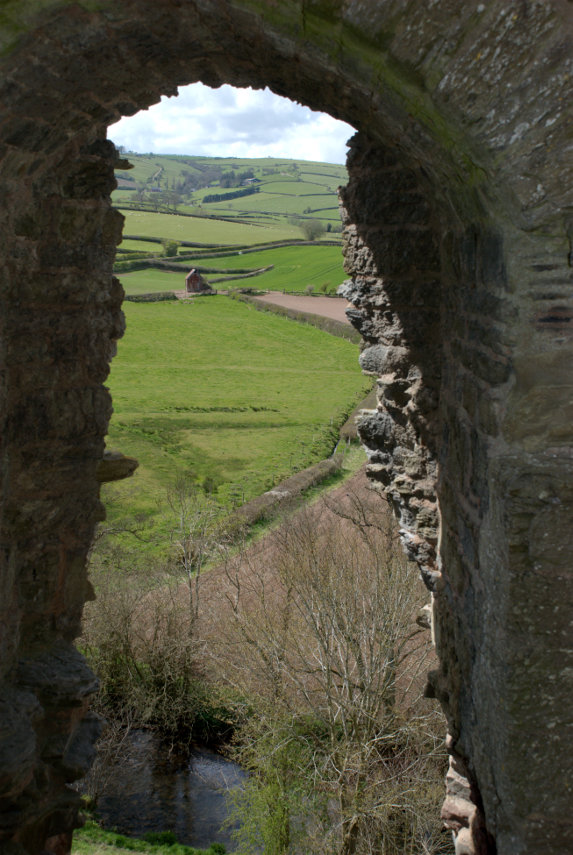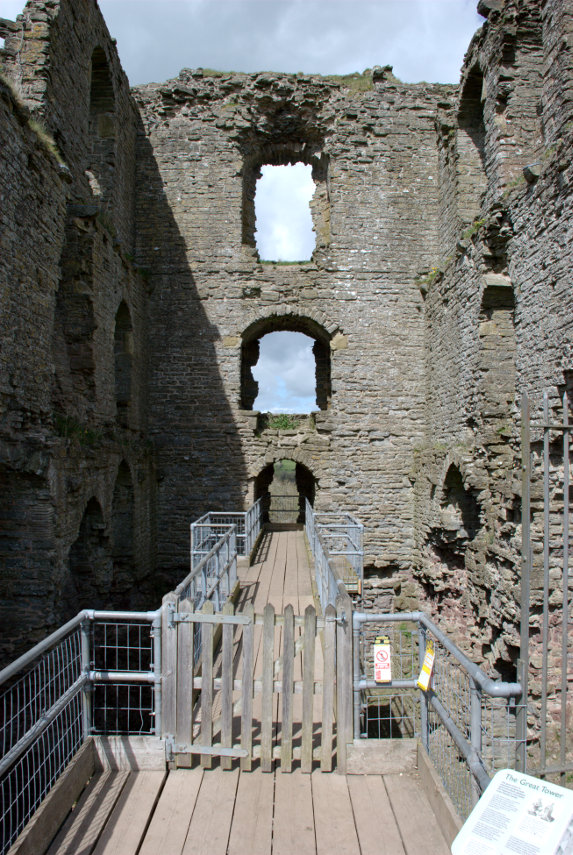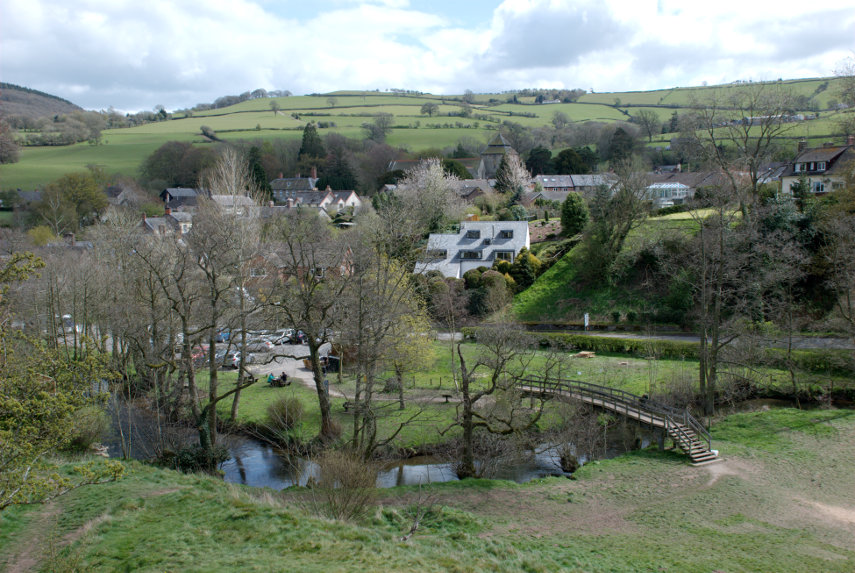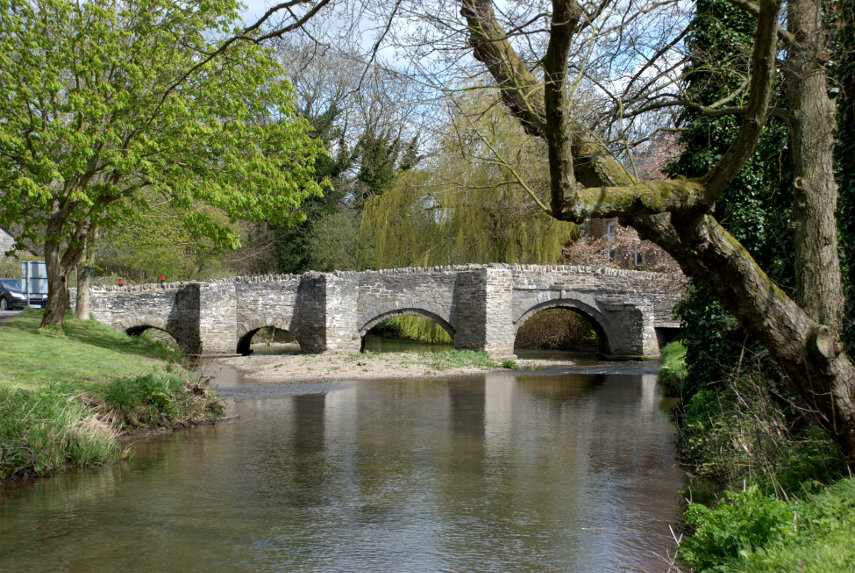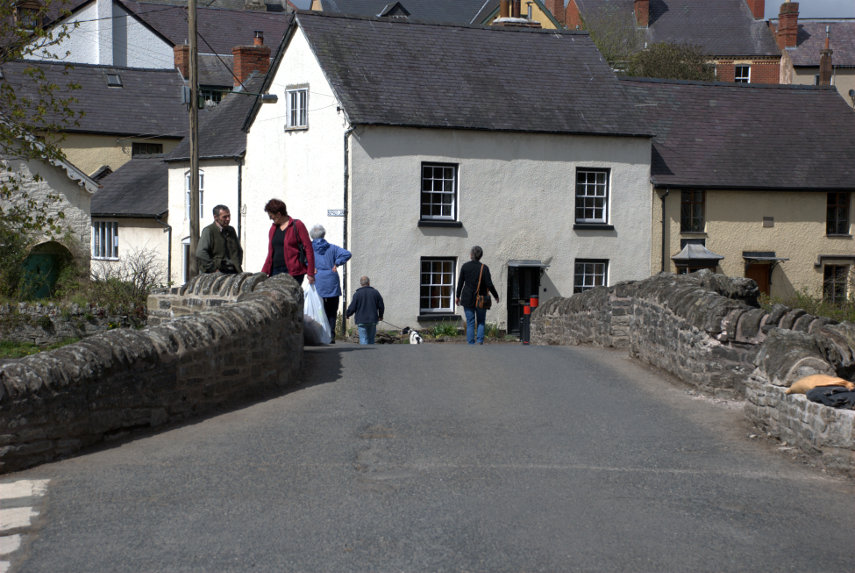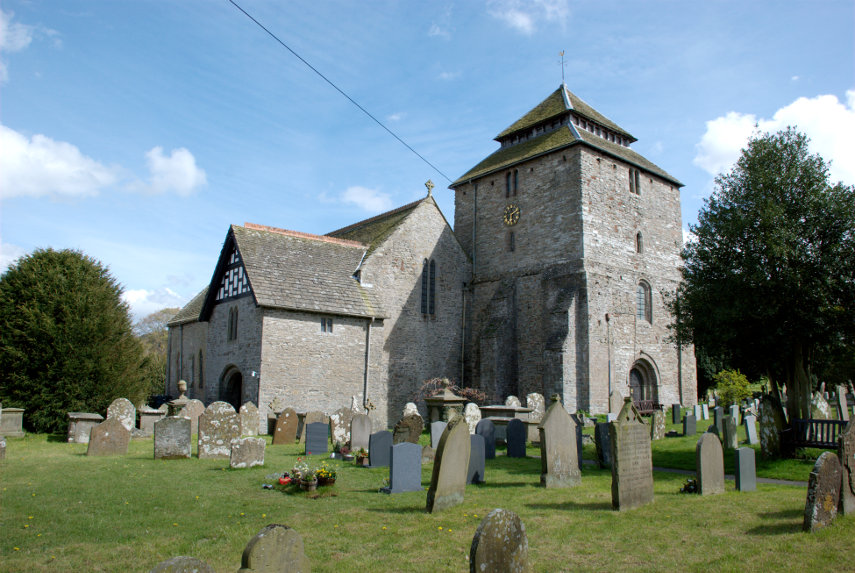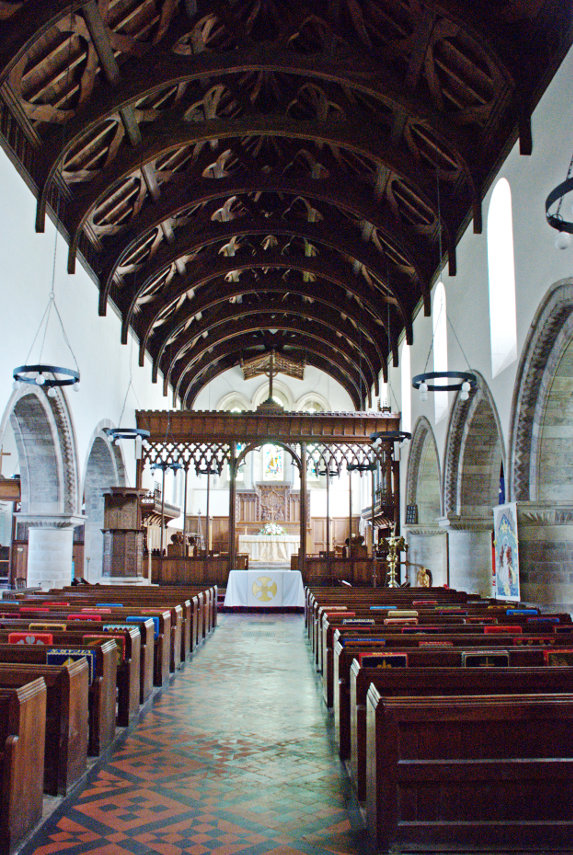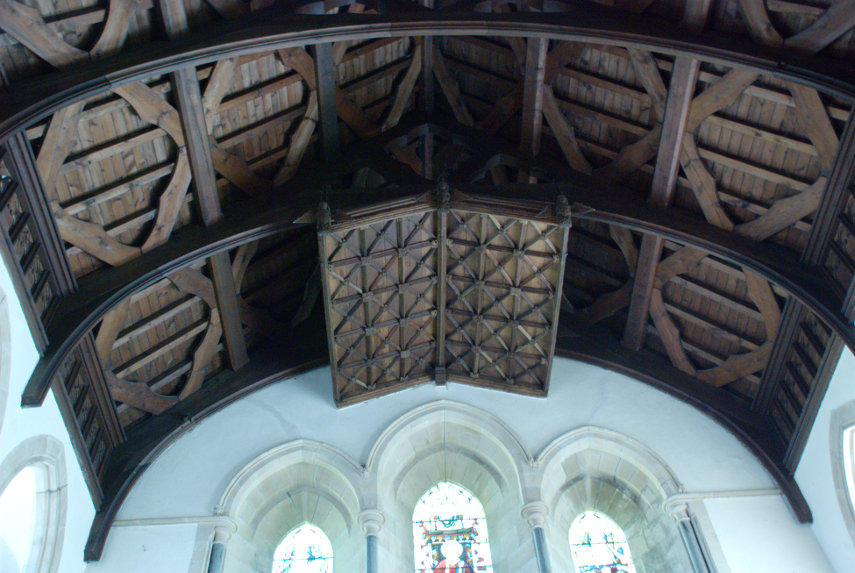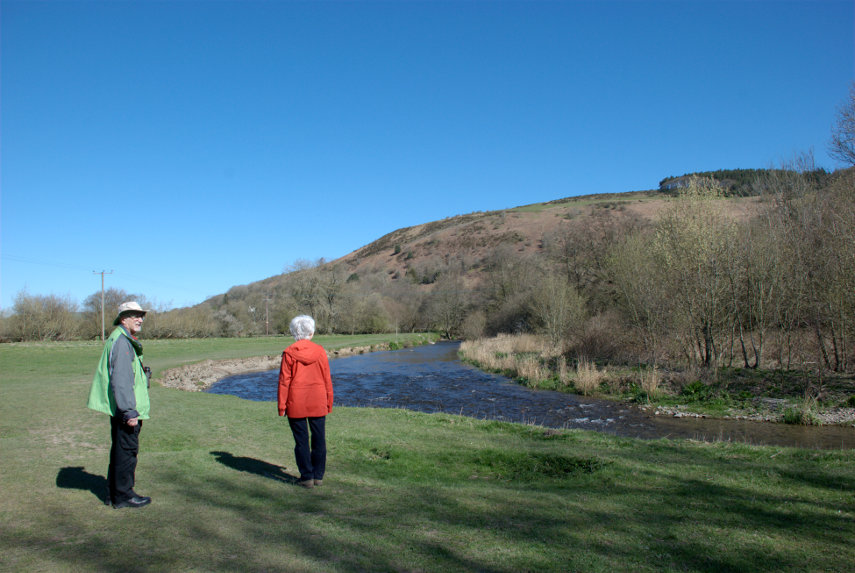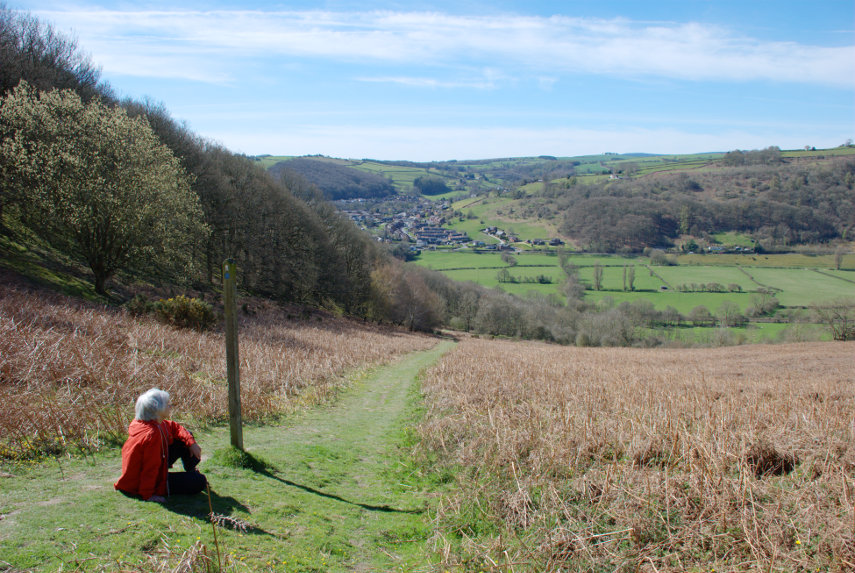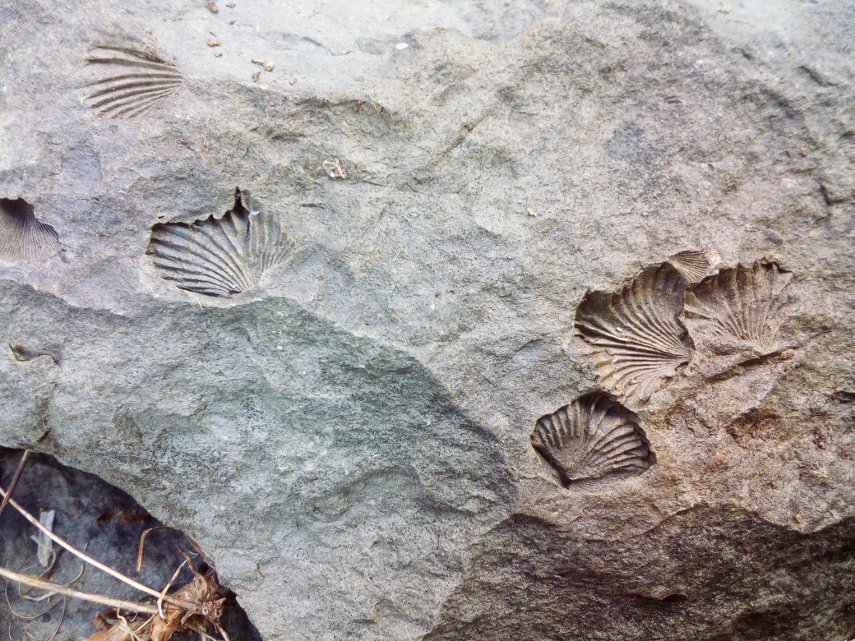A devil of a walk
When Amanda was a child she used to read books by Malcolm Saville some of who's stories were situated around the Stiperstones in Shropshire and she had always wanted to vist them. The Stiperstones are on a ridge a little west of the Long Mynd near Church Stretton and is about a 45 minute drive from us so, of course, we had to go.
There is a car park at the bottom of the eastern flank of the Stiperstones ridge and that is where we parked. We found the start of the footpath up to the ridge easily enough and could see some of the rocky outcrops on the summit of the ridge from the car park.
The slope wasn't too bad but the distance is longer than it appears in the photograph. This area is designated as an NNR (National Nature Reserve) and has lots of interesting wildlife including lizards and adders (venomous snakes) to mention but a few.
We reached the ridge after a not too strenuous walk to be greeted by this view.
It was unfortunate that we picked a hazy day which meant that, although it was a lovely day, the distant views were partly obscured. The views still looked amazing though and we started along the ridge which meant that, from this point, we were still climbing.
You'll never guess who that is ahead.
This ridge was formed about 480 million years ago from quartzite and during the last ice age these rocky outcrops stood above the glaciers and were subject to constant freezing and thawing which shattered the quartzite into a mass of jumbled rock as we were to discover.
That jumbled rock was eventually covered in vegetation but when people walk over it the vegetation wears away and, if it's popular (which it is), the soil is worn away too leaving the exposed rock. This is what the path looks like:
Let me tell you that is very awkward and uncomfortable to walk on. It is very unwise not to look at the ground whilst walking and, if you want to look at the view, then stop walking first.
A number of the various rock outcrops along the ridge have names and this was the second one we reached. This is called Manstone Rock and has an Ordnance Survey trigonomentry point on it which you should be able to see. Amanda 'collects' these so that was one to add to the list.
At the far end of Manstone Rock was this interesting rock pillar formation:
So on we went towards that distant outcrop in the picture above, the Devil's Chair, which is the one on the right below.
Luckily (or otherwise) there was a little devil in situ:
I hope it doesn't put you off going there. At this point we must be near, or at, the maximum height of 1759 feet as you may be able to see from the view in this next picture.
The two figures on the path between the rock outcrops give an idea of scale and they were two of the few other people we saw on this walk. We did hear, and see, some skylarks singing in the sky above our heads and we also saw two lizards although they quickly scuttled off into the heather but, sadly, no adders.
We turned around and made our way back along that dreadful path although once we reached the downward turn the surface was much better and we soon arrived back at the car park.
We drove down to The Bog, as you do, which is a visitor centre for the area and we had a light lunch before moving on to our next, and final, destination. It was a short drive on normal roads then a short, slow, very bumpy drive up a track to a small parking area and this is what we came to see:
It is Mitchell's Fold Stone Circle. Not quite as spectacular as Stonehenge, ![]() , but it is possible to walk among, and touch, the stones. They appear to vary in size because a number of them have fallen and have been left in that position.
, but it is possible to walk among, and touch, the stones. They appear to vary in size because a number of them have fallen and have been left in that position.
This view shows Corndon Hill in the background and also a little Amanda sitting on the grass on the far side.
Have you ever had that feeling that you're being watched?
This is a Bronze Age stone circle in Shropshire situated at a height of 1083 feet and is a Scheduled Ancient Monument in the guardianship of English Heritage. As with most sites of this type, its true history is unknown but the doleritic stones came from nearby Stapeley Hill.
In the beginning there may have been some thirty stone pillars and the survivors that still stand range in height from 10 inches to 6 feet 3 inches and stand in an ellipse 89 feet NW-SE by 82 feet.
That was our day! Two quite interesting (we thought) locations and just a shortish drive home.
Getting bored with all these Welsh/English borders views yet? ![]()

